[Case of lung edema occurring as a result of inhalation of fumes from a Teflon-coated flying pan overheated for 4 hours].
Cuvinte cheie
Abstract
The patient was a 59-year-old man who had been treated with continuous positive airway pressure for a diagnosis of obstructive sleep apnea syndrome. While cooking buckwheat noodles, the patient fell asleep with a frying pan on the fire. After four hours, he was awakened by the smell of burning as well as pharyngalgia, and visited this hospital. He was found to have hypoxia, and diagnostic imaging showed diffuse concentration increase with peripheral clear zones in bilateral lung fields, a typical finding of pulmonary edema. In view of the peculiar temporal course of his disease and inhalation of Teflon fumes immediately before its occurrence, he was considered to have polymer fume fever with non-cardiogenic pulmonary edema. After admission, he was treated with oxygen inhalation and diuretics, and experienced a rapid improvement of his general condition and findings on diagnostic imaging. In European countries and the United States, cases with a history of inhalation of Teflon fumes have been given a diagnosis of polymer fume fever. This case is of interest as it is apparently the first such disease reported in Japan.


